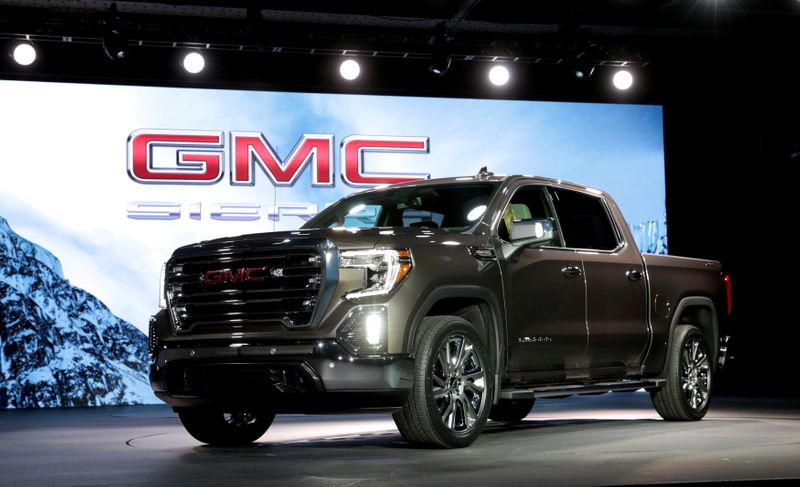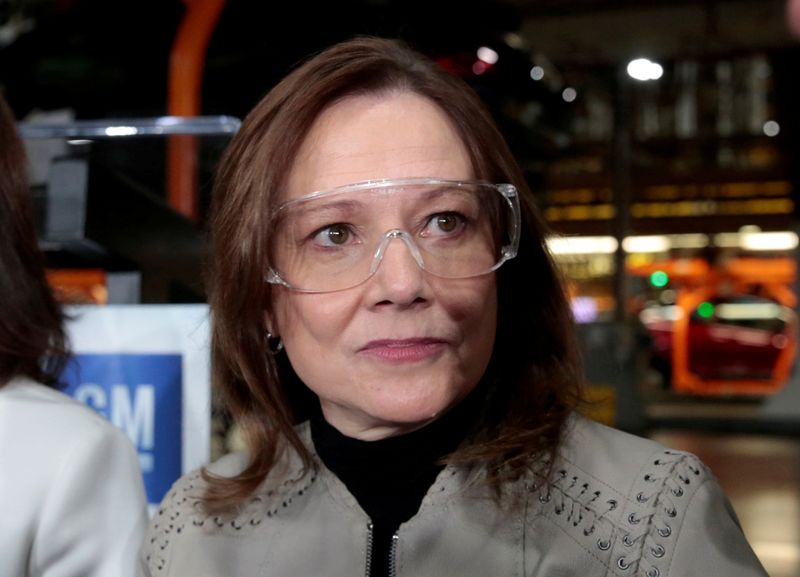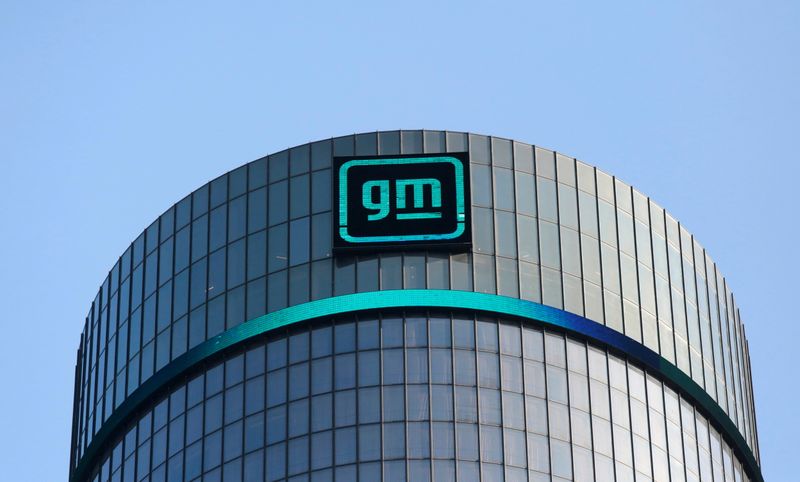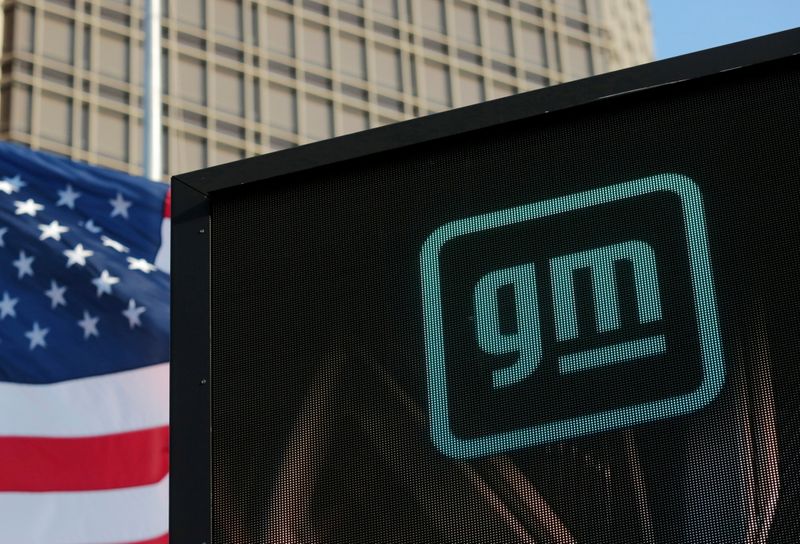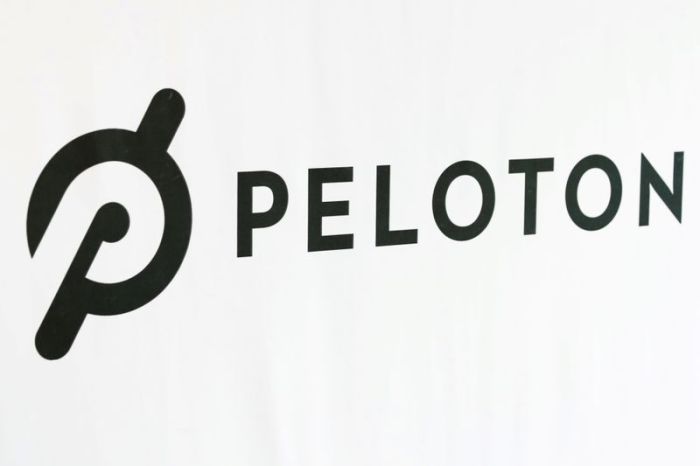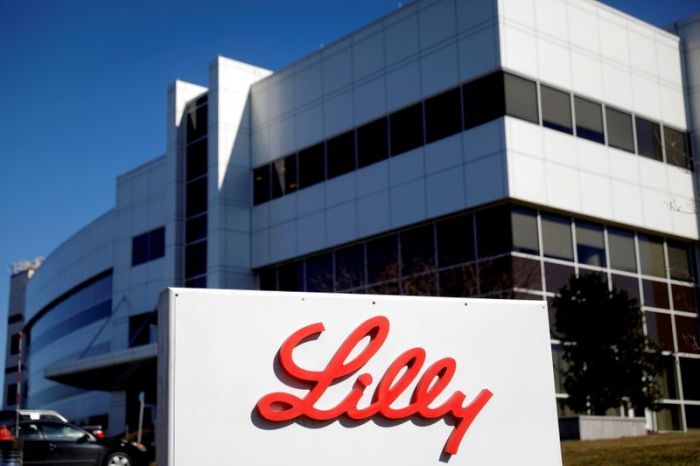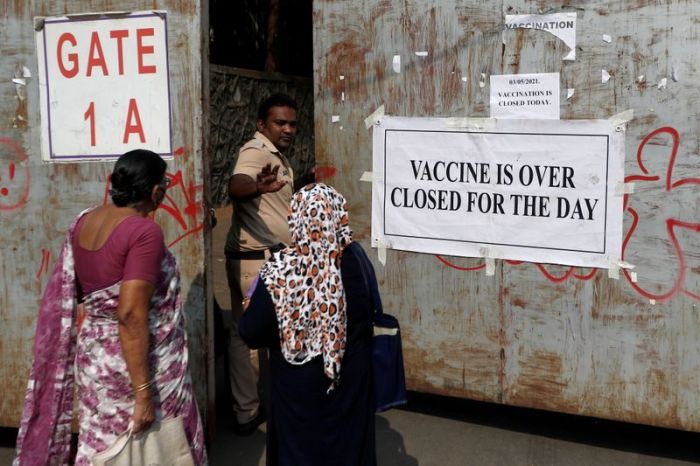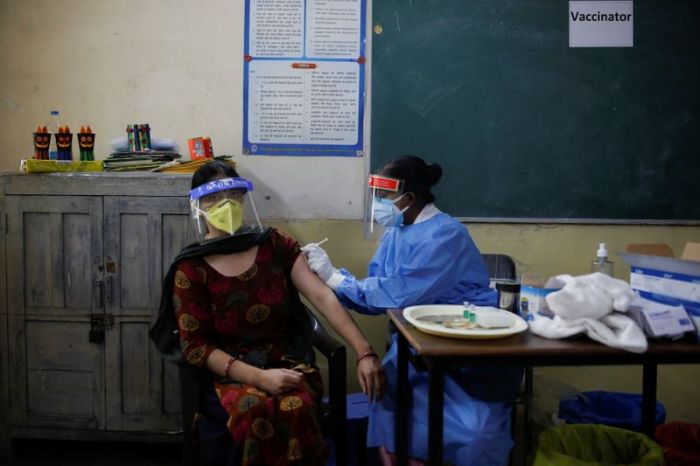(Reuters) -General Motors Co and Chief Executive Mary Barra were forced by the semiconductor supply-chain crunch to slash production and sell fewer vehicles at higher prices.
The result: Fatter margins, far stronger than expected first-quarter profit and a healthy boost for GM shares.
Executives at Stellantis NV, created by the merger of PSA and Fiat Chrysler, echoed the same theme on Wednesday. Last week officials at Daimler AG and Ford Motor Co made similar comments.
Through the haze of production cuts and supply-chain snafus, some automakers are discovering they can deliver better results without stockpiling vehicles or padding sales volumes with low-priced, low-margin models.
“We’ll never go back to that level of inventories that we held pre-pandemic because we’ve learned we can be much more efficient,” Barra told analysts on a conference call on Wednesday, though she added future supplies would be “a little higher” than current levels to satisfy customer demand.
“It’s better for everybody,” she said. “It’s better for the car company, it’s better for the dealer.”
Barra added the No. 1 U.S. automaker was focused on maximizing production of high-demand vehicles like the full-sized Chevrolet Silverado pickup, and GMC Yukon, Chevy Suburban and Cadillac Escalade SUVs.
The leaner vehicle supplies allowed GM to raise average new-vehicle transaction price by 9% overall, including 10% for pickups and over 20% for large SUVs, Chief Financial Officer Paul Jacobson said.
Thanks to high consumer demand that has pushed up prices, focusing on those high-margin models contributed $3.2 billion to GM’s first-quarter pretax profit.
Pretax margins in GM’s North American auto business hit 12.1% in the first quarter, up from 8.5% a year earlier.
GM has continued to build its highest-profit vehicles by shifting supplies of chips from lower-priced models and idling factories that produce them. Last week, it extended downtime for plants in Kansas and Ontario into early July and late June, respectively, curtailing output of the Cadillac XT4 and Chevy Equinox SUVs, and the Chevy Malibu sedan.
Ford on Wednesday outlined plans to idle more plants, including two weeks in May at its Kansas City, Missouri, plant that builds the top-selling F-150 truck.
ATTAINING BALANCE
Auto executives, especially at the Detroit Three, have talked for years about more closely matching production and inventories to customer demand, moving away from endless rounds of discounts and year-end clearance sales. The pressure to keep factories running, and a tradition of aiming for higher sales volumes, kept the prize out of reach.
At Daimler, Chief Financial Officer Harald Wilhelm on April 23 highlighted the company’s higher margins and praised the industry for “not dumping” vehicles into the market.
“We are not pushing like mad for volumes, and that has a healthy impact,” Wilhelm said.
The current chip supply crisis is far from the ideal way for automakers to achieve a more profitable balance of supply and demand. Automakers have cut full-year profit forecasts, and are warning the squeeze could last into next year.
Barra echoed other auto executives when she said the chip shortage will worsen in the second quarter before improving in the second half of the year.
GM reiterated its full-year 2021 earnings guidance and said “based on what we know today,” its results will be at the upper end of the $10 billion to $11 billion adjusted pretax profit it has previously forecast.
GM stuck to earlier forecasts that the chip shortage could shave $1.5 billion to $2 billion from this year’s profit. The automaker declined to say how much vehicle production would be lost this year due to the issue.
Carmakers across the world have had to curb output, hampering their attempts to recover from the COVID-19 pandemic, due to a shortage of vital chips used in everything from computer management of engines to driver assistance systems. Stellantis, echoing GM as well as Ford last week, said second-quarter production would suffer and the chip shortage would linger into 2022.
Barra also said on Wednesday GM was working with Honda Motor Co to expand their partnership to purchasing, research and development, and connected services.
GM posted a first-quarter net profit of $3 billion, or $2.03 per share, up from $294 million or 17 cents per share, a year earlier. Excluding items, it earned $2.25 per share, well above analyst expectations of $1.04.
The company’s shares were up 3.8% at $57.45 on Wednesday afternoon.
(Reporting by Ben Klayman in Detroit and Nick Carey in LondonWriting by Joe WhiteEditing by Steve Orlofsky and Matthew Lewis)

